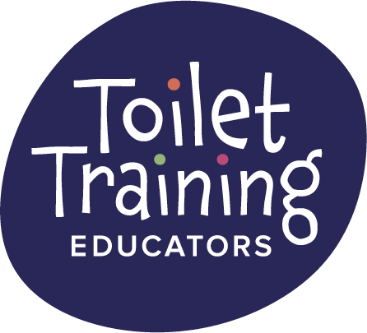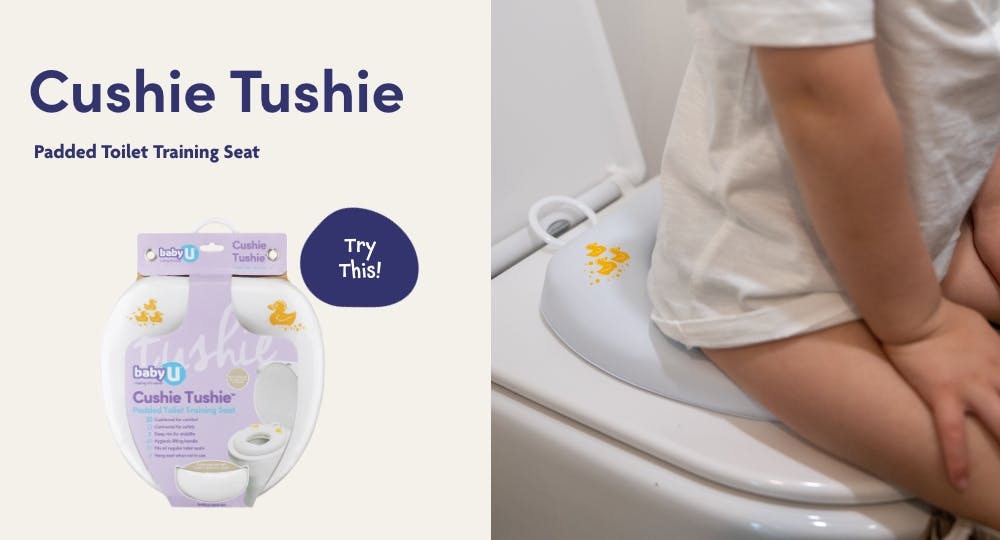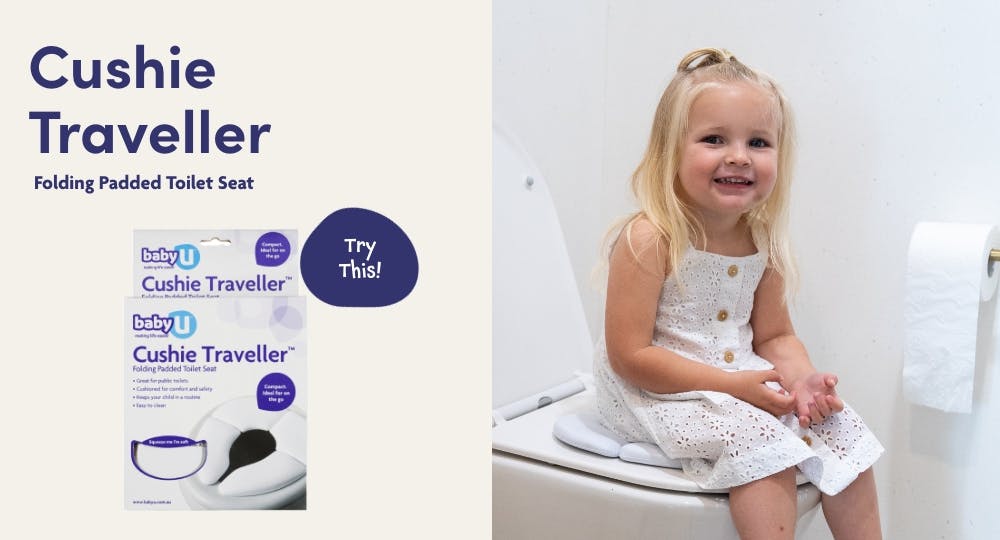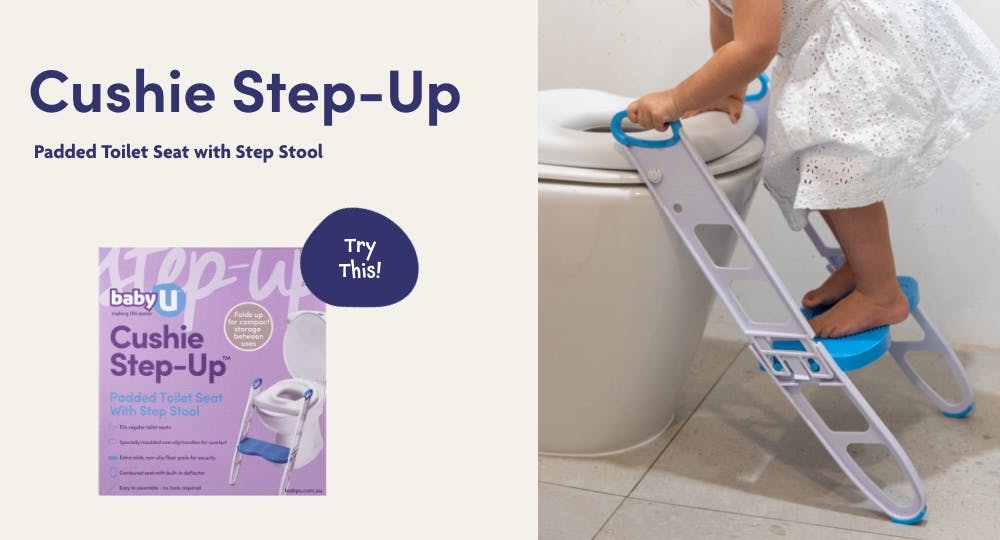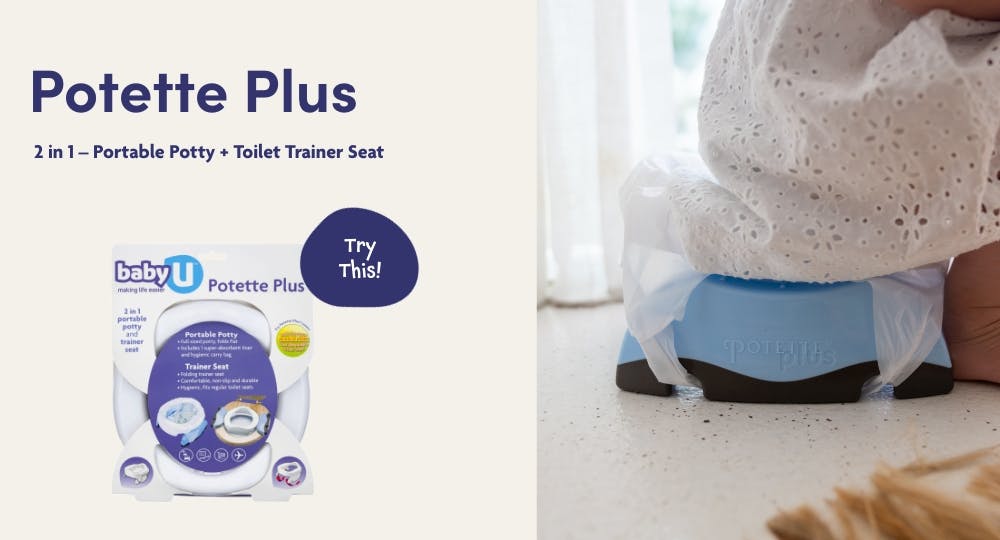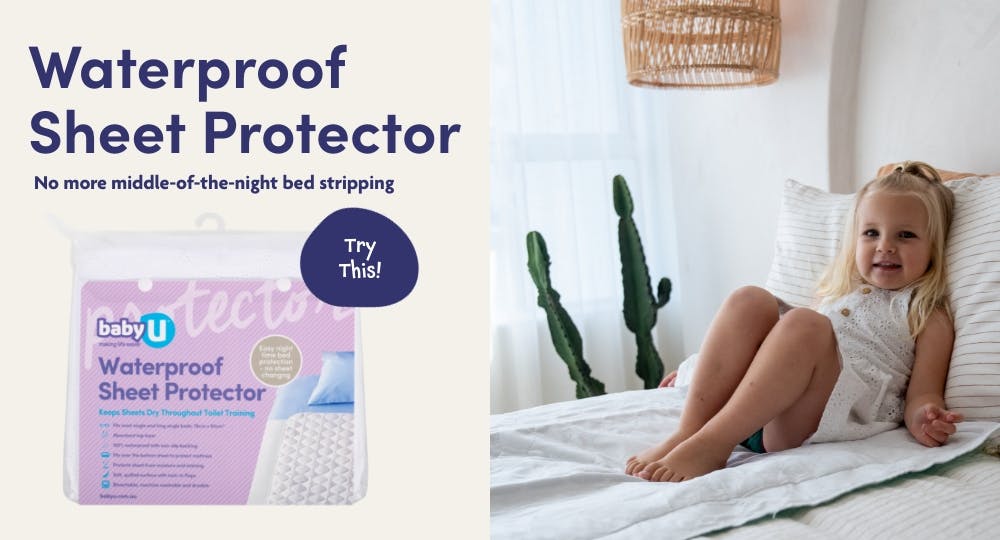Toilet Training 101
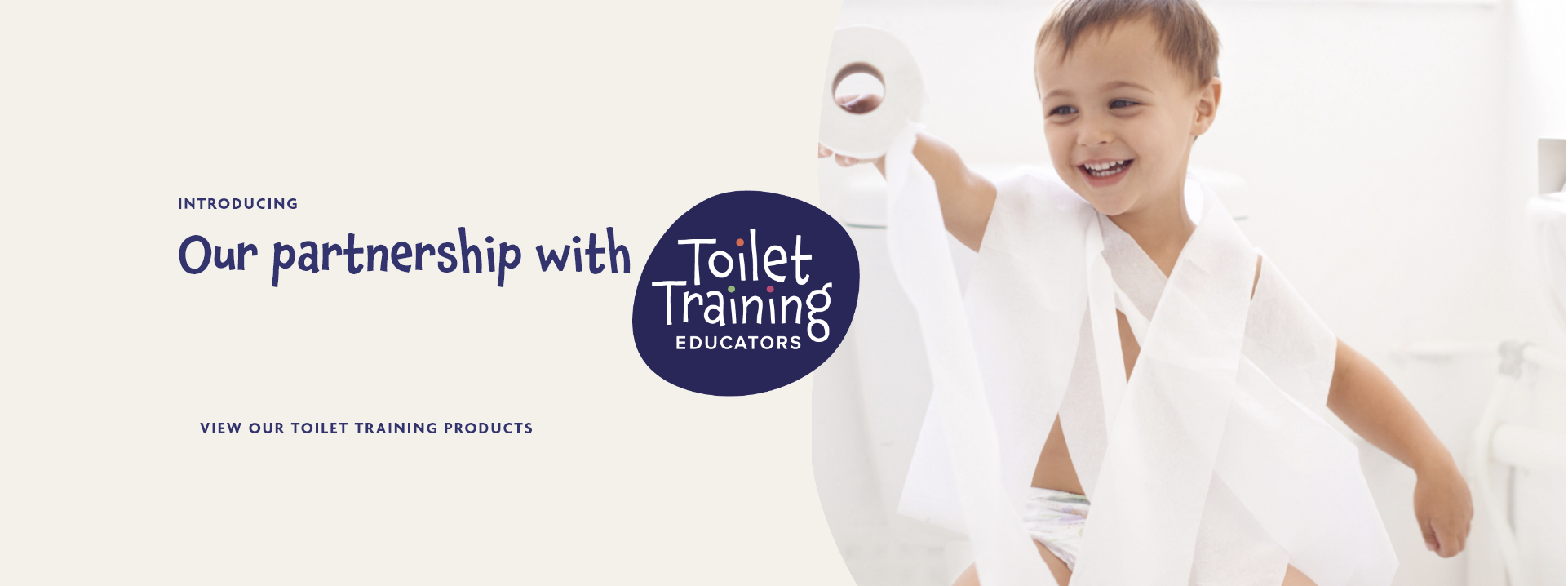
Toilet Training can be stressful, and even thinking about it can make parents anxious.
It’s one of the ‘big three’ – Food, Sleep and Toileting keep parents up at night and second-guessing their actions.
Sure, it is challenging, but with the right tools, the right plan and taking the pressure off, all children and parents will get through this period successfully. babyU has partnered with Toilet Training Educators, who are experts in the toilet training field, to offer you Toilet Training 101.

When should we start thinking about toilet training?
The evidence tells us that toilet training commenced between 18-24 months is more likely to be successful and easier for parents. We know that after 3 years, developmental milestones such as autonomy and independence play a role and are more likely to lead to resistant behaviours (sounds familiar?). So, try to start thinking about your approach to toileting early in your child’s life.
How do we know when your little one is ready?
There are things we need from the child as indicators of readiness, both physical and behavioural.
Physical Readiness
- To be able to stay dry for 1 to 2 hours
- To pass a good amount of urine
- To do soft-formed bowel actions
- To be able to sit for a few minutes
- To be able to pull their pants down
Behavioural Readiness
- Begins to recognise signals from their body and take actions as a result – like hiding when they need to go to the toilet
- Starts to show an interest in the toilet – wants to look, flush, use or give you the paper
- Becomes uncomfortable with poo in their nappy
- May take the nappy off or ask for it to be changed
- Asks questions about the toilet, wee and poo
What are the key things we should do in preparation for toilet training our child?
The training of your child is the third stage of developing the skill to use a potty or toilet. Children learn to toilet in the same way as people learn everything else, and it is important to help them with stages 1 and 2 to prepare for stage 3.

Stage 1: Modelling
The child is learning by watching and copying: they will learn from you how to feel about toileting and the steps involved by modelling their parents. They’ll also be listening to the words you use and your body language – so no “stinky or smelly” or “big boys and girls use the toilet” – it’s important to be a good role model and keep the pressure off!

Stage 2: Exploring
This is when the child wants to become involved, they want to watch, they’re curious about how it happens, what’s produced and where it goes. We don’t need to make it a big deal or force it, but if the child wants to engage, then it’s important to let them! Avoid anything that builds expectation and pressure – like rewards and special undies, and quietly expect success – just as you do with walking, eating and every other skill they will learn.

Stage 3: Training
When you are thinking about starting the training stage, throw away your change mat and change the child in the toilet room – it’s about familiarization. It’s also a good idea to put some toilet paper or tissue in the nappy so the child starts to connect a wee with wetness and discomfort. It’s hard for them to understand why it’s important to use the toilet if there is no consequence for weeing in your nappy.
What do we need to have before starting toilet training?
There are a few essential items you will need to prepare before embarking on your toilet training journey. You may not need everything at once, but it’s a good idea to have the basics ready, so you are prepared for whatever pace the process takes.

Potty
Potties are miniature versions of the real thing and are available in a variety of colours, sizes, characters and features. It’s a great starting point for toilet training as it helps to familiarise your child with the toilet. babyU’s Pottete Plus is a portable potty that comes with disposable liners, which are super handy when you’re out and about, or when your child is having a ‘can’t hold it in’ emergency!

Toilet Seat
A toilet seat nests into your regular toilet seat, for comfort and stability, making them perfect for small bottoms. Our Cushie Step Up comes with steps, a padded toilet seat and a step stool with handles to help your child reach the seat and sit safely. If you are short of space, our Cushie Tushie is a great alternative. For something portable, try our Cushie Traveller, a convenient option when you are on the go.
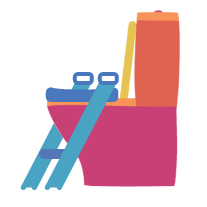
Steps/Stool
Steps or stools can come in handy for both reaching a toilet seat and for washing hands after using the toilet. The height of the step stool will depend on the use. babyU’s Cushie Step Up is perfect for toddlers and parents that find Toilet Training a daunting task. Easy to assemble, the Cushie Step-Up helps toddlers gain more confidence in using an adult-sized toilet.

Undies
Once your child is in the training stage, it’s time to buy undies! Make it fun — let your little one help with the selection process. The key is to pick reasonably loose-fitting undies that are easy to take off and pull back up.

Training Pants
Cloth training pants are undies that have an extra layer of light padding, which could be helpful with catching small accidents while allowing the child to feel the sensation of being wet and uncomfortable.

Mattress Protector
Your child may wet the bed during daytime naps while toilet training or the occasional accident at night even after their body is ready. So, it’s always a good idea to have a babyU’s Waterproof Sheet Protector which sits on top of the bed sheet, so you don’t have to rip the sheet and everything else off the bed and disturb their sleep (and yours)!
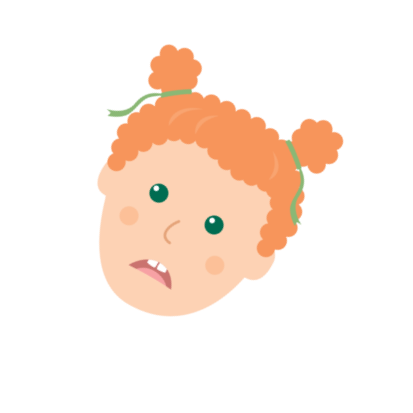

What are the common setbacks that parents often face?
The most common problem in toilet training is pooing on the toilet. There are children who are easily wee-trained and then won’t have anything to do with pooing in the toilet. By far, the most common cause is fear – and this is most often created by pain through constipation. It’s most critical to overcome constipation and take the pressure off the child. Let them have a nappy in the toilet room to poo in – it’s a step to getting them closer to sitting on the toilet and helps them overcome their fear.
Regression is another common issue. When a child has too many other things to think about – like a new house or sibling, or when they are not well, it’s harder for them to be able to devote conscious brain space to receive and act on the message that they need a wee or poo. It will pass, just keep reminding them to try.
What are the common things that are easy to get wrong?
One of the greatest mistakes that parents can make is taking on the pressure created by misinformation and other people. So, let’s explore a couple of myths!
Lack of products to aid with safety and learning
When a child is learning to poo, it’s important that they have their feet planted on a stool, a step or the floor. A toilet seat also needs to reduce the hole in the toilet.Without this, the body position makes it difficult to poo physically – a child is trying to balance, can’t follow through and needs to push rather than poo working its own way out.
Incentives that create pressure
Don’t make using the toilet a big deal at all. Expect they will be successful and treat it low-key. No incentives and no special undies. We don’t offer incentives for walking!
Getting everyone involved also creates pressure – for everyone.
Keep toilet training between your immediate family and any other carers like grandparents or childcare. Keep everyone low-key!
You cannot train a child to be dry at night
The age at which we start being able to concentrate wee at night is genetically programmed. For 88% of us that happens before 6 years of age.
Accidents Happen
How many per day is considered normal and what’s the best way to deal with them?
Accidents are normal. Learning by mistakes is an important part of all skill development. We need them to learn! Most children wee every 1.5-2 hours unless they have small bladders, so taking your child every 2 hours for ‘a try’ can help. Don’t ask a 2 or 3-year-old if they need to go – the answer is NO!
Poo is a little different – anything between 3 times a day and 3 times a week is considered normal in the early years. Most children have a poo half an hour after a meal or hot drink – watch out for your child’s habits and ‘have a try’ at that time.
Treat accidents in a low-key way. No punishment and no pressure! Always clean them up in the toilet room and ask your child to sit on the toilet to see if there are any more. Referring to an accident as a ‘sneaky’ wee or poo can also take the pressure off the child by making it about the poo or wee, not about them.
Weeing 20 times a day or every 20 mins is not an ‘accident’ and neither is 6-8 small poos a day for a child over 18 months – these are signs of medical problems that need attention.
How can we keep kids interested once the initial novelty has worn off?
Treating toilet training as a normal skill development process removes the need to keep them interested. It’s just something that’s happening. Personality can play apart here is that some kids find it boring, some want to be like their older siblings, and some just decide today is the day.
Try some things that mix it up like:
- Set the oven timer and have a race to the toilet on random days if your little person is competitive
- Attach toileting to other routine activities – going to the toilet is always part of getting ready for breakfast, cleaning teeth, packing a bag etc.
- Ask them what their penis or bottom needs to do – sometimes disassociation helps!
If everyone is sick and tired of the whole thing, stop for a couple of weeks and try again. Sometimes this makes a huge difference as well as giving everyone a break
Is it possible to toilet train a child in a matter of days, or is this just unnecessary added pressure?
All children are unique. They, like adults, learn some things faster than others. So yes, some children will train quickly, and others will take much longer. Expecting it to happen quickly will create pressure. It will take as long as it takes, and it has nothing to do with intelligence.
How well you familiarise your child with toileting and creating a no-pressure environment makes the training stage easier.
What if you’ve tried everything but you and your child is still struggling to make any progress?
If you feel you’ve tried everything - have a break! You probably all need one, and your child won’t unlearn, forget or become confused. That’s not how learning works. Go back to small steps.
If there is any chance there is a medical issue, such as constipation, or irritable bladder (weeing frequently with urgency), you would need to seek medical assistance.
Ask for a referral to a specialist, such as a continence paediatrician.
About
Toilet Training Educators
Toilet Training Educators recognise toilet training as a normal developmental stage where a skill (toileting) needs to be learnt – just like eating and walking need to be learned.
They work with parents and families, maternal & child health nurses, childcare educators and kindergarten teachers.
Visit the Toilet Training Educators website if you are:
- Thinking that it’s time but feeling anxious about getting started
- Confused by conflicting advice and experiences shared by friends and family etc.
- At your wits end trying to make it work for you and your toddler
You’ll find loads of free resources covering everything from readiness to wiping bottoms and night wetting. If you’re seeking a more comprehensive picture, there are targeted eBooks and a comprehensive book containing everything you need for toilet training your child. They also offer face-to-face sessions, webinars and consultations.
Learn More